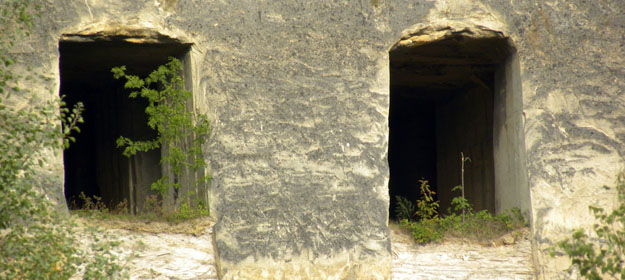
Tunnels in the Maastrichtian Formation (Late Cretaceous) in Maastricht, The Netherlands. Location = N50.82667°, E5.67978°.
MAASTRICHT, THE NETHERLANDS–The tunnels dug into the soft Maastrichtian Formation limestones in this city have a long history starting with the Romans. At first the excavations were intended only to extract building stone, but with all the battles, sieges and other military actions in this region, residents realized that these dry and deep caves also provided places of refuge. Bakeries, chapels, storehouses and dormitories were constructed in these spaces for times of war since the Middle Ages.
During World War II, the Dutch hid several works of art in these tunnels to protect them from the Germans. These included the magnificent Night Watch by Rembrandt and The Street by Vermeer. They were guarded by Dutch military police successfully throughout the occupation. We can view this art today because of the extent, thickness and composition of this Cretaceous limestone sequence — and the courage of Dutch patriots.



